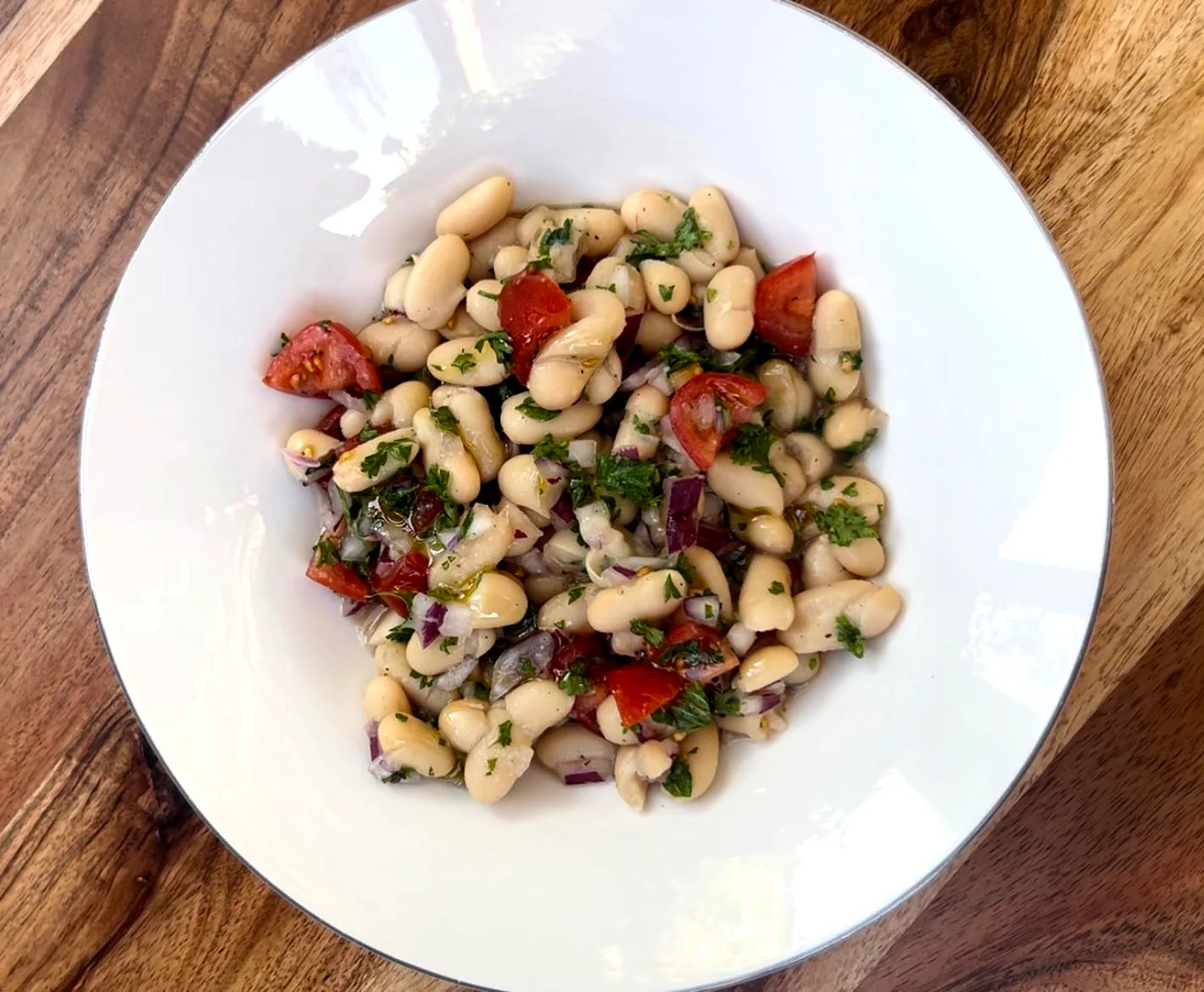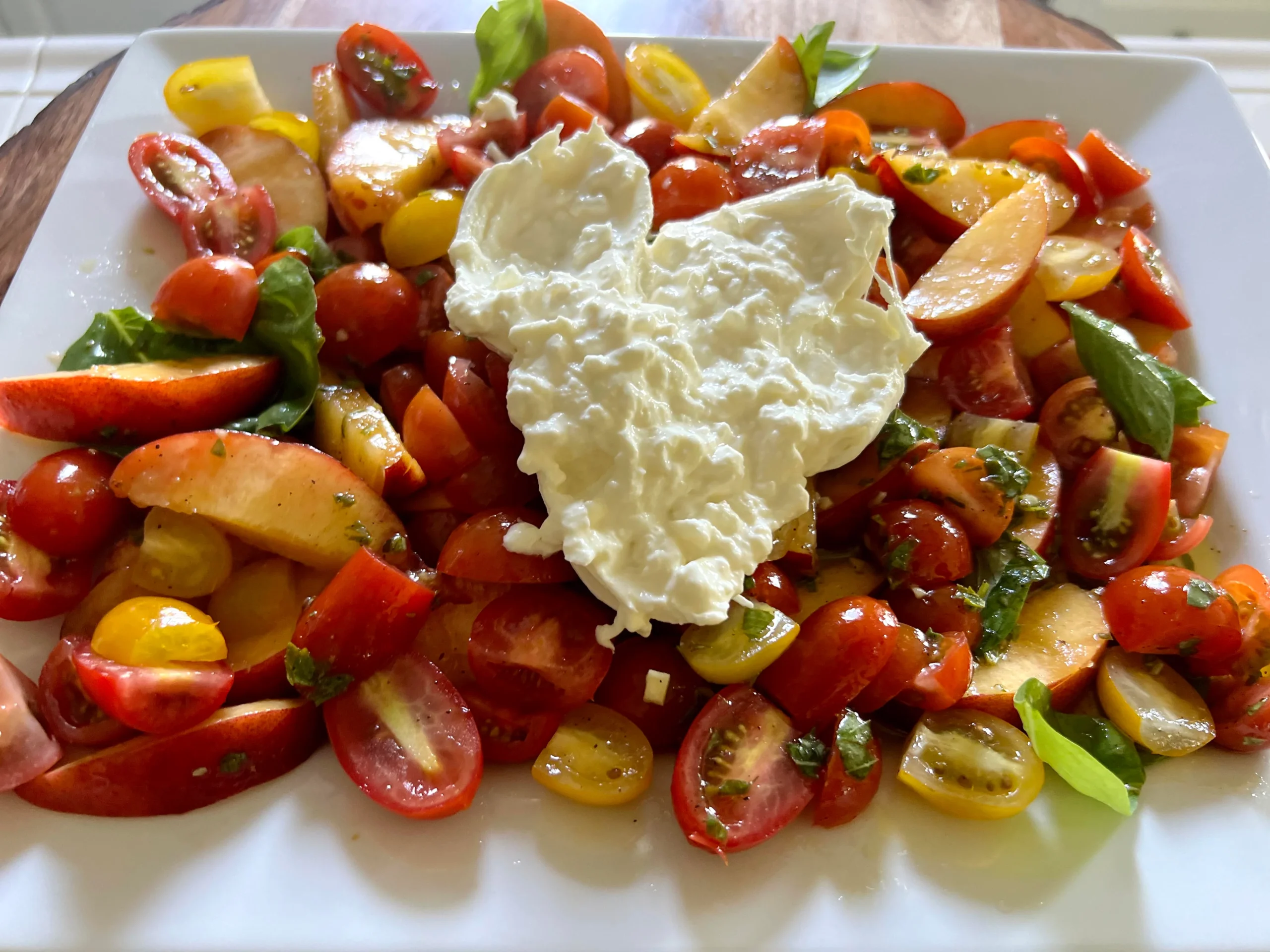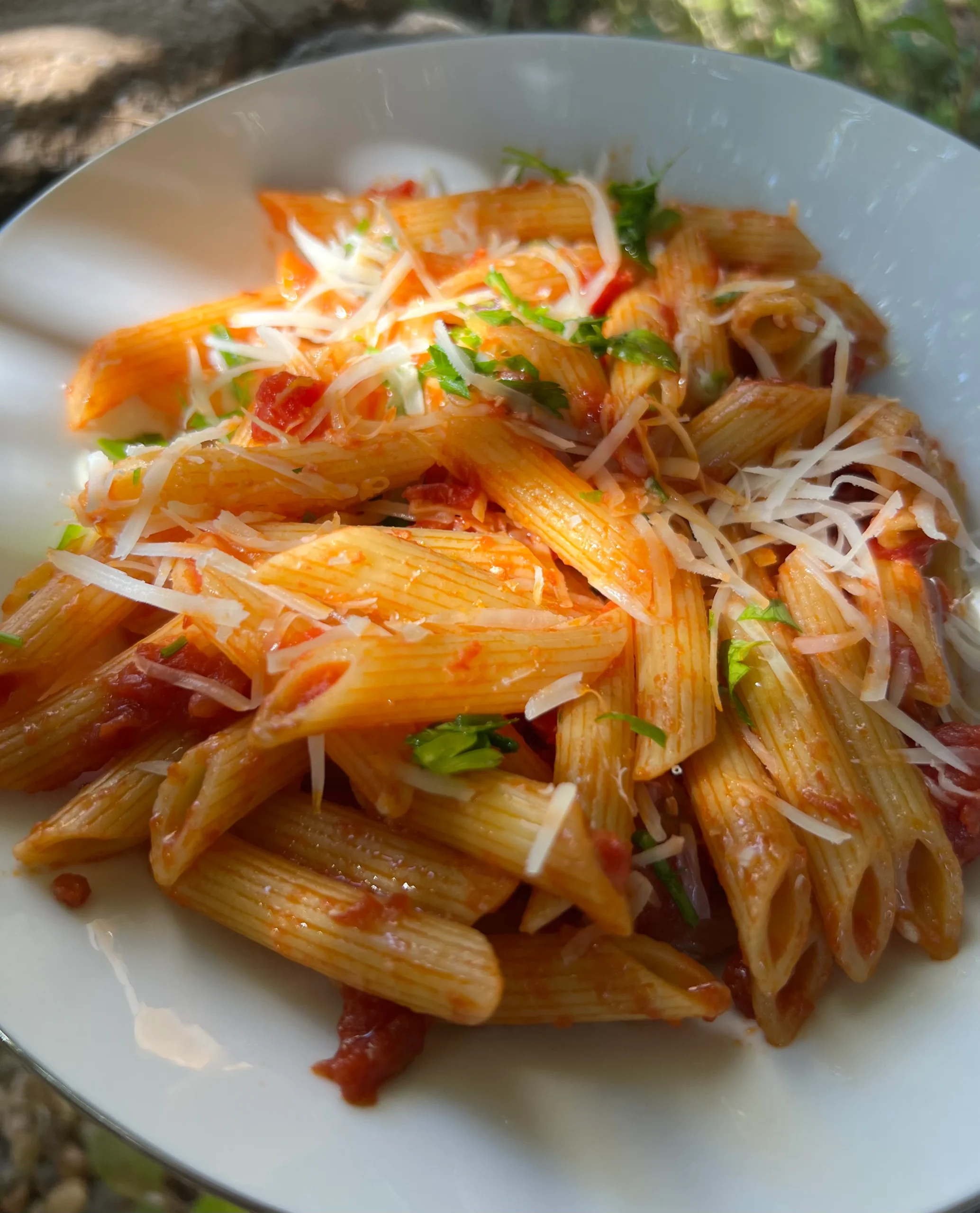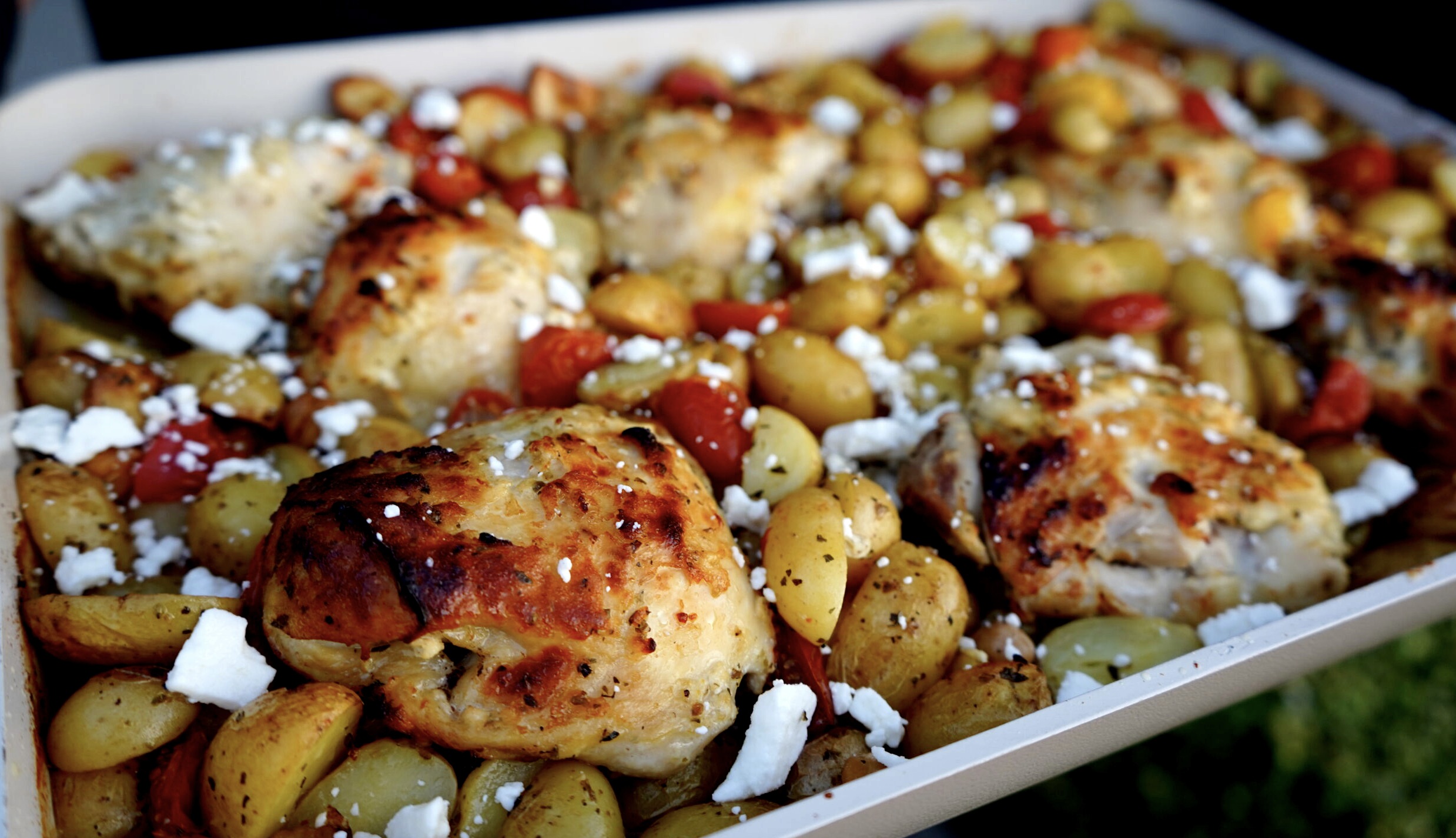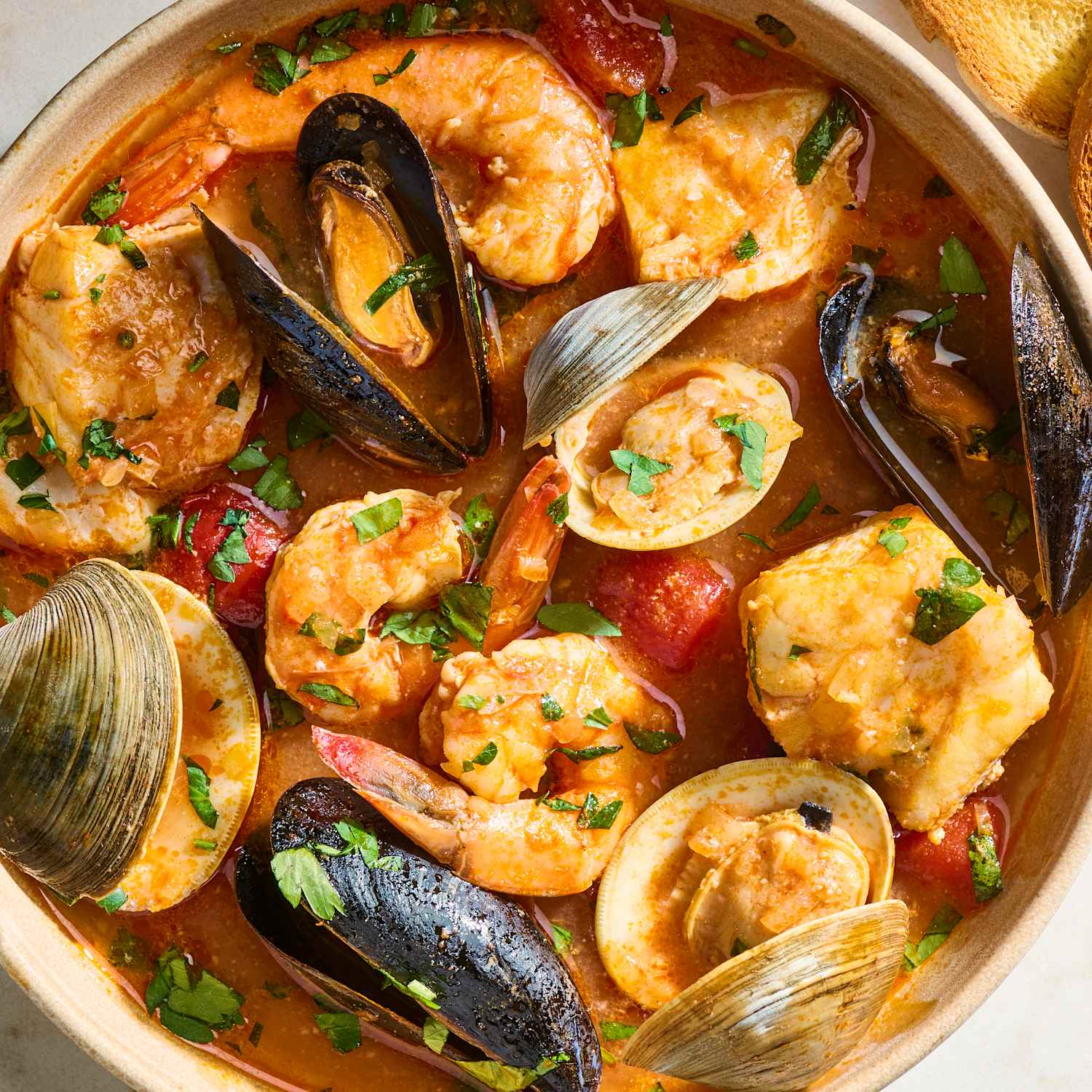Authentic Risotto al Pomodoro e Basilico – Simple, Elegant, Delicious
There’s something almost meditative about making risotto al pomodoro — the steady rhythm of stirring, ladling, and watching the rice slowly turn creamy. This version, with ripe tomatoes and fresh basil, feels like summer captured in a bowl. The sweetness of the tomatoes blends into the rice, while the basil adds that unmistakable fragrance of an Italian garden.
It’s rustic and comforting, yet elegant enough to bring to the table with a flourish — proof that the simplest ingredients often create the most memorable meals. If pasta is the king of Italian comfort food, risotto might be the quiet queen — less flashy, more patient, demanding your attention but rewarding you with something that feels both luxurious and humble at the same time.
The first time I tried risotto al pomodoro e basilico in Italy, it was in a little trattoria just outside Bologna. I had walked in tired and hungry after a long day, not expecting much more than a quick plate of pasta. But the waiter suggested the risotto, insisting it was made with tomatoes from the chef’s own garden and basil picked that morning. I said yes, and I’m glad I did.
What arrived at my table was a bowl that looked deceptively simple — creamy rice stained a soft pink from the tomatoes, a few torn basil leaves scattered on top, and a drizzle of golden olive oil. No mountain of cheese, no ornate garnish, just honesty in a bowl. The first bite was a revelation. Sweet, savory, fresh, and comforting all at once. It felt like sunshine and soil, like summer condensed into a spoonful.
Why Risotto al Pomodoro is Worth the Patience
Making risotto al pomodoro at home can intimidate people because it asks for your attention. Unlike pasta, which you can leave to boil while you scroll through your phone, risotto insists that you stay present. You can’t just dump in the broth and walk away; you have to feed it slowly, one ladle at a time, stirring as the rice releases its starches and transforms into that creamy texture. But there’s a beauty in that process.
Cooking risotto forces you to slow down, to listen to the sizzle, to notice the smell shifting as garlic softens, onions turn sweet, and the rice toasts in the pan. It’s the kind of dish that rewards patience and presence — qualities we could all use more of.
This particular version, with tomatoes and basil, is one of the most traditional and beloved because it takes ingredients Italians hold closest to their hearts. Tomatoes in Italy are not just tomatoes. They’re sun-warmed, vine-ripened jewels that taste like a place and a season all at once. Add to that fresh basil, with its peppery fragrance and vibrant green color, and you’ve got the essence of an Italian summer.
Together, they give the risotto a lightness that makes it different from the richer versions with mushrooms or heavy cheese. It’s still creamy, but the brightness of the tomatoes and basil makes it feel almost refreshing, a dish that works as well in July as it does in January when you need to remember what summer feels like.
The Italian Roots of Tomato Basil Risotto
The history of risotto itself is rooted in northern Italy, especially Lombardy and Piedmont, where rice fields stretch across the plains. Arborio and Carnaroli rice varieties are prized for their ability to absorb liquid without losing their bite, which is what makes risotto work. Rice came to Italy centuries ago through Arab influence in Sicily, but it found its home in the north, where the climate was perfect for cultivation.
Over time, each region developed its own style — saffron-infused risotto alla milanese in Lombardy, seafood risotti along the coasts, hearty mushroom risottos in the forests. The tomato and basil version may not be the oldest, but it captures that quintessential Italian instinct to take what’s seasonal and abundant and turn it into something extraordinary.
Cooking risotto al pomodoro e basilico at home, I always start with a soffritto of onion and garlic in olive oil, the foundation of so many Italian dishes. Then I add the rice, letting it toast just until the edges turn translucent. The first splash of white wine is my favorite moment — the pan hisses, the aroma lifts, and you know something good is beginning. Then comes the slow dance of adding broth, stirring, waiting, repeating. Tomatoes go in as they break down, staining the rice with their color and flavor.
At the end, fresh basil is folded in, its fragrance rising with the steam. A handful of Parmigiano-Reggiano stirred in at the finish gives it body and that unmistakable savory depth, but not so much that it overpowers the tomatoes and basil. The balance is everything.
I’ve found that risotto has a way of drawing people into the kitchen. Maybe it’s the sound of stirring, maybe it’s the promise of what’s to come, but I’ve rarely made risotto alone. Friends drift in, glasses of wine in hand, watching, offering to stir for a while, asking how you know when it’s ready. And that’s another lesson risotto teaches you: readiness isn’t exact. There’s no timer.
You taste, you feel, you decide when the rice is creamy but still has that slight bite at the center. It’s judgment learned only by doing, by being there. And when you finally spoon it into bowls and scatter fresh basil on top, everyone feels a little ownership in the meal, like they were part of its creation.
Eating it feels almost ceremonial. You don’t rush risotto. It’s not grab-and-go food. It asks you to sit, to savor, to enjoy the warmth of the bowl in your hands. Each spoonful carries the sweetness of tomato, the fragrance of basil, the richness of olive oil, the whisper of cheese. It tastes like something greater than its ingredients, a kind of alchemy that happens only when patience and simplicity meet. And maybe that’s why risotto is so memorable. It doesn’t just feed you; it slows you down, anchors you in the moment, and reminds you that food can be both nourishment and meditation.
Whenever I make tomato basil risotto now, I think of that trattoria outside Bologna. I think of the way the basil leaves wilted just slightly on the hot rice, of the golden drizzle of olive oil catching the light, of how I lingered over every bite even though I had trains to catch and places to be. That bowl reminded me that the best meals are often the simplest ones, the ones that capture a season, a place, or a feeling with just a few honest ingredients.
And that’s what risotto al pomodoro e basilico does: it tastes like summer, like Italy, like slowing down. It’s rustic and comforting, yet elegant enough to bring to the table with a flourish. Proof that the simplest ingredients often create the most memorable meals — if only you take the time to stir.
What to Drink With Risotto al Pomodoro
There’s a certain ceremony to sitting down with a bowl of risotto al pomodoro e basilico. You’ve stood at the stove, stirring and waiting, coaxing rice and tomatoes into creaminess, and when you finally carry it to the table, you want a drink that feels like it belongs.
The beauty of tomato and basil risotto is its freshness. It’s lighter than mushroom risotto or seafood risotto, yet it still has that comforting, creamy body. That means your drink should balance those qualities — crisp enough to cut through the richness, but bright enough to echo the freshness of the tomatoes and basil.
Wine Pairings
- Crisp Whites – A Falanghina from Campania or a Vermentino from Sardinia brings citrus, minerality, and just enough acidity to dance with the sweetness of ripe tomatoes. If you can’t find those, a good Pinot Grigio works wonders.
- Dry Rosé – A pale Italian rosato, slightly chilled, pairs beautifully. It mirrors the pink hue of the risotto and adds a refreshing counterpoint.
- Light Reds – A young Chianti or Dolcetto, served slightly cool, offers gentle tannins without overwhelming the dish. These wines carry the rustic charm of Italy and pair perfectly with tomato-based flavors.
I still remember sipping a chilled glass of Vermentino alongside my first bowl of risotto al pomodoro in that trattoria near Bologna. The wine’s crispness cut through the creaminess, leaving each bite as fresh as the first.
Non-Alcoholic Pairings
If wine isn’t on the table, you can still elevate the meal with thoughtful choices:
- Sparkling water with a slice of lemon or blood orange — refreshing and palate-cleansing.
- An iced herbal tea, like chamomile or mint, for a delicate pairing.
- A lightly bitter Italian soda — San Pellegrino Aranciata Rossa is a personal favorite.
What to Make Alongside Risotto al Pomodoro
Since risotto al pomodoro e basilico is creamy yet fresh, I like to keep sides simple. A crisp arugula salad dressed with lemon and olive oil mirrors the brightness of basil. Roasted vegetables — zucchini, eggplant, or peppers — add color and depth. And a loaf of rustic Italian bread, still warm, makes sure no bit of tomato-basil creaminess is left behind.
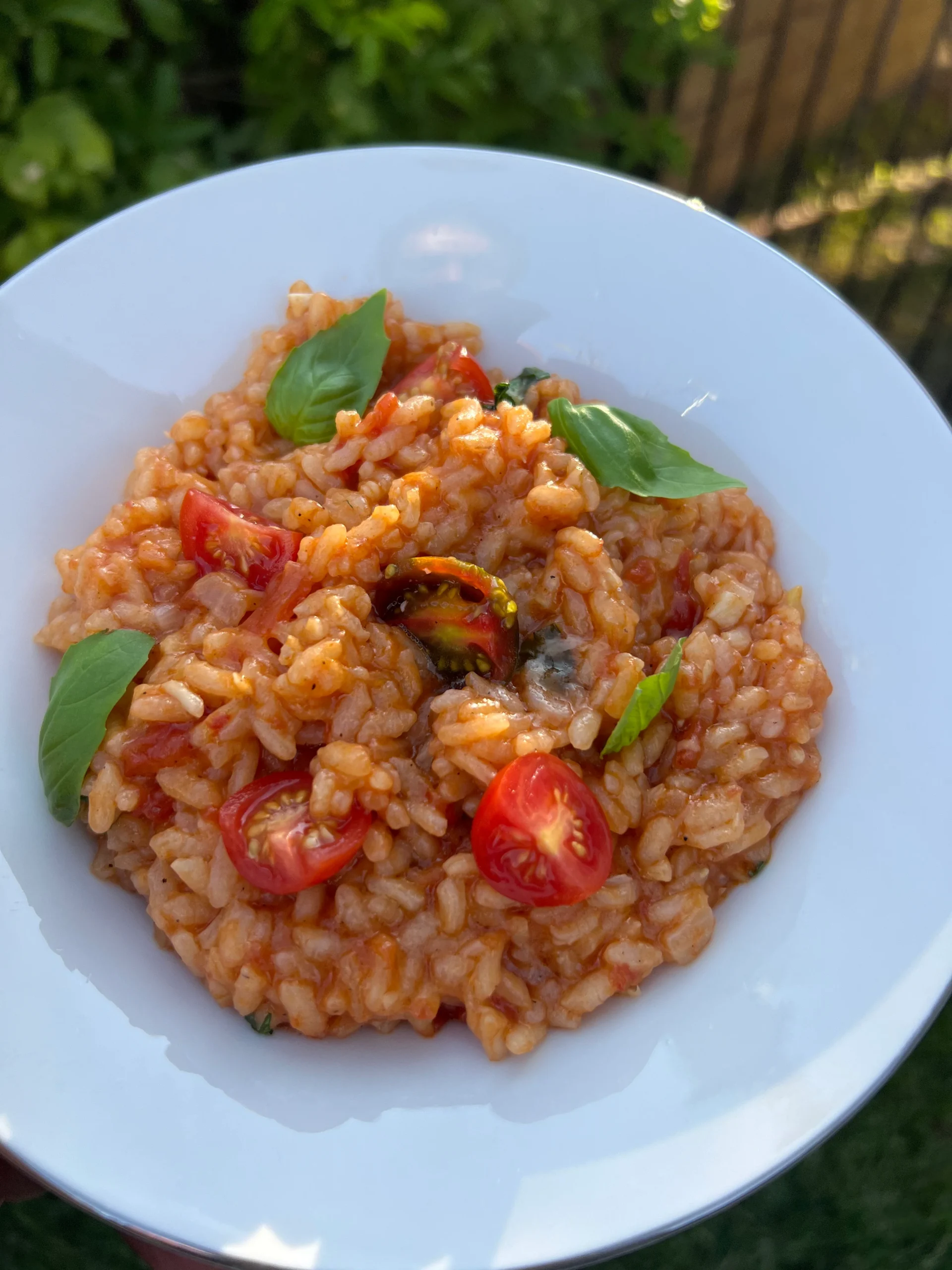
Risotto al Pomodoro e Basilico (Tomato Basil Risotto)
Ingredients
Method
- In a saucepan, heat your stock and keep it warm over low heat.In a seperate large pan, heat olive oil over medium heat.Add onion and sauté until translucent, about 5 minutes.Stir in garlic and cook 1 minute.Add Arborio rice and cook 2 minutes, stirring, until lightly coated and fragrant.Pour in the white wine and stir until absorbed.Add 1 ladleful of warm stock at a time, stirring frequently until absorbed before adding more.After 10 minutes, stir in the crushed tomatoes. Continue adding stock gradually and stirring until the rice is tender but still al dente (about 18–20 minutes total).Remove from heat. Stir in butter, Parmigiano-Reggiano, and basil. Adjust seasoning with salt and pepper.Cover and let rest 1 minute before serving.Spoon into warm bowls. Garnish with a drizzle of olive oil, extra basil leaves, and more cheese if desired.
Notes
- Risotto should be creamy and loose, not stiff — it should gently spread on the plate.
- Use fresh summer tomatoes (peeled and blended) instead of canned for an even brighter flavor.
- Pair with a crisp white wine like Pinot Grigio or Verdicchio.
Tips for Perfecting Risotto al Pomodoro
- Keep the broth warm – Adding cold stock stops the cooking process; warm broth keeps the rhythm steady.
- Stir, but not constantly – Too much stirring makes the rice gummy, too little leaves it uneven. Find a balance.
- Season gradually – Tomatoes can vary in sweetness and acidity. Taste as you go so the flavors stay balanced.
- Finish with freshness – Always add basil and a drizzle of olive oil at the very end, so their fragrance is alive when you serve.
Sitting with risotto feels like slowing down. With a glass of wine or sparkling water in hand, good bread at the ready, and the steam rising from a bowl of risotto al pomodoro e basilico, the meal turns into something more than just food. It becomes a moment — rustic yet elegant, simple yet unforgettable.
Other Risotto Recipes to Try
If you’ve fallen in love with risotto al pomodoro, you’ll be happy to know there’s a whole world of risotto waiting for you. Each one highlights seasonal ingredients and regional Italian traditions:
- Risotto alla Milanese – Golden with saffron, creamy, and luxurious, a classic from Lombardy.
- Mushroom Risotto (Risotto ai Funghi) – Earthy and rich, often made with porcini mushrooms for depth of flavor.
- Seafood Risotto (Risotto ai Frutti di Mare) – A coastal favorite packed with shrimp, mussels, clams, and calamari.
- Risotto al Limone – Bright and citrusy, perfect for spring and summer.
- Risotto agli Asparagi – A springtime risotto with tender green asparagus and a touch of Parmesan.
- Risotto alla Zucca – Creamy pumpkin or butternut squash risotto, sweet and savory, often served in autumn.
- Risotto al Barolo – A bold Piedmontese dish made with red wine, rich and deeply flavored.
- Risotto con Spinaci e Ricotta – Light and fresh, with wilted spinach and creamy ricotta folded in.
- Risotto al Pesto – Stirred with fresh basil pesto for a fragrant, green twist.
- Risotto alle Zucchine e Fiori di Zucca – A delicate summer risotto with zucchini and zucchini blossoms.

